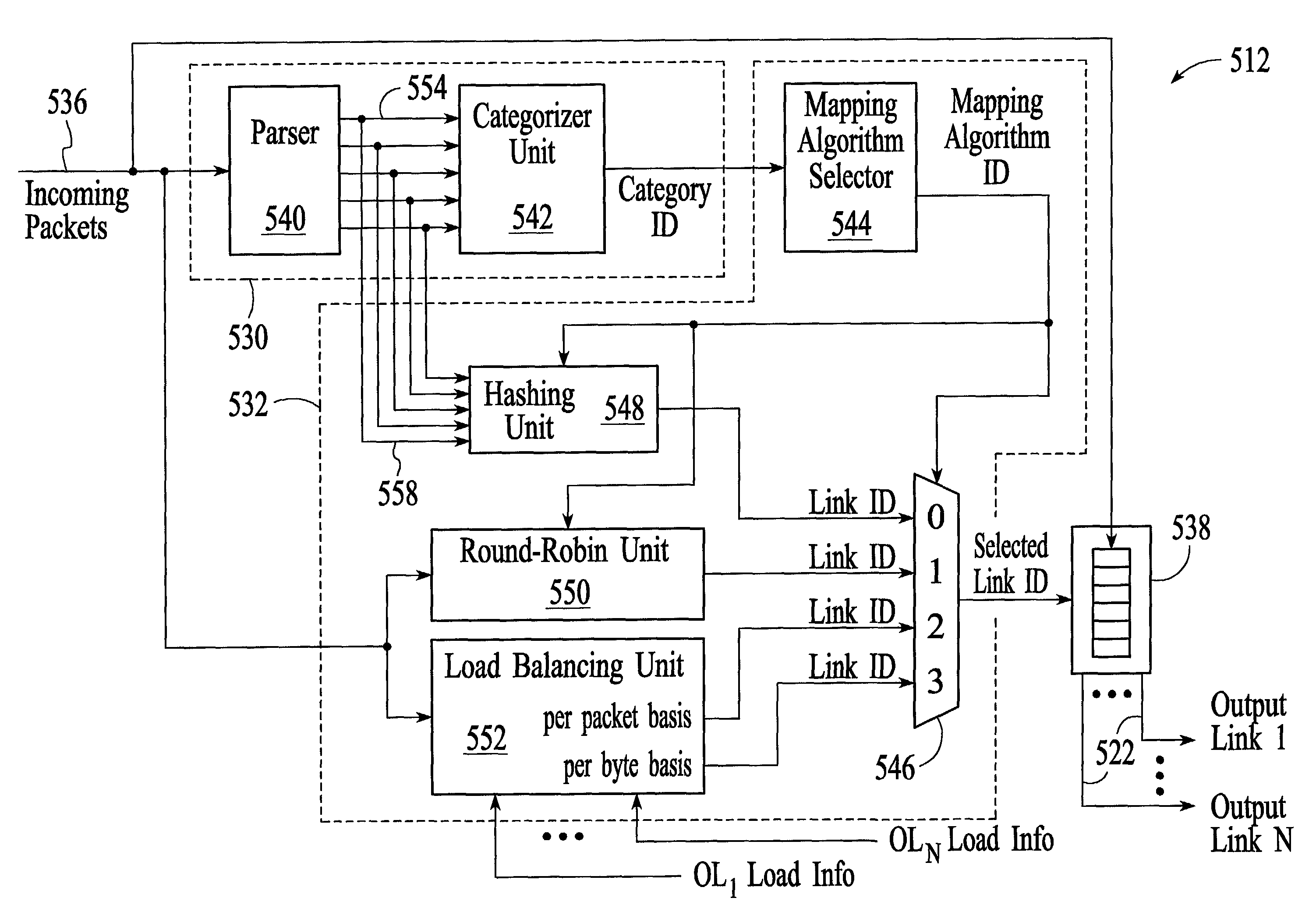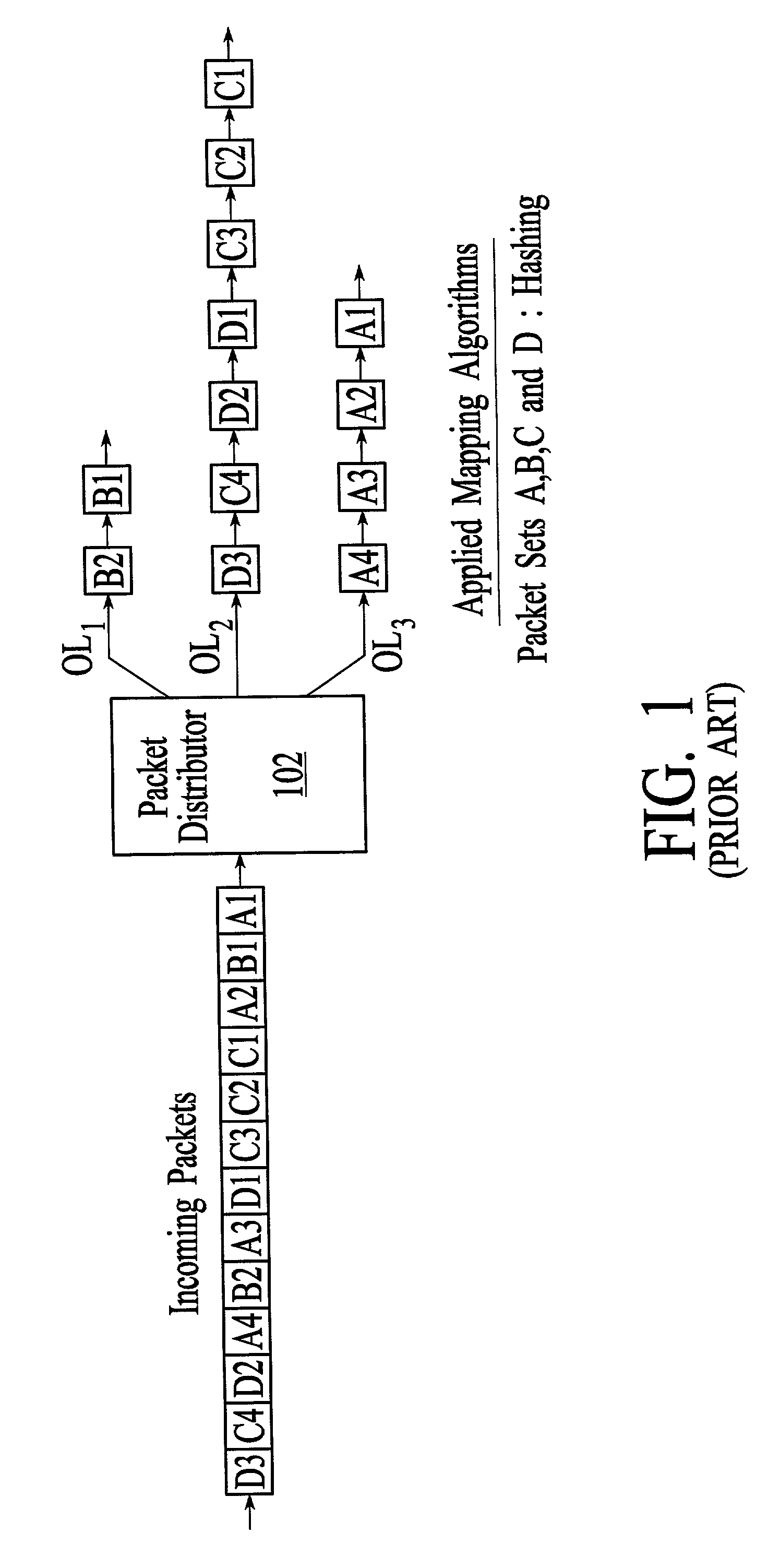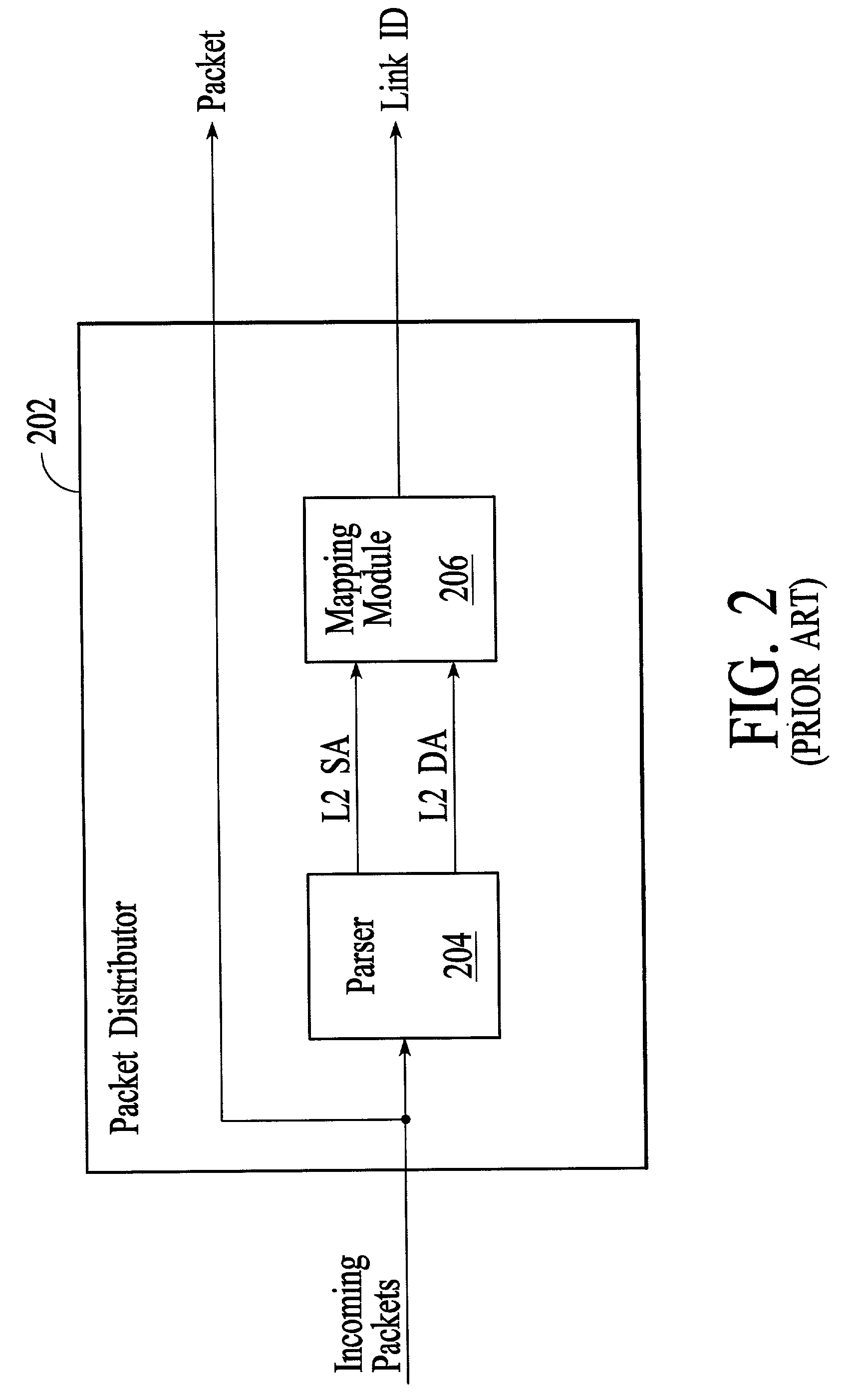Flexible application of mapping algorithms within a packet distributor
a technology of packet distributor and mapping algorithm, applied in the field of packet-based communication systems, can solve the problems of not working as well in an environment, and not offering the flexibility to apply different mapping algorithms to different types of packets
- Summary
- Abstract
- Description
- Claims
- Application Information
AI Technical Summary
Benefits of technology
Problems solved by technology
Method used
Image
Examples
Embodiment Construction
[0028]FIG. 3 depicts a switch / router 300 that is connected to a 10 GbE physical link 308. The switch / router has the ability to perform layer 2 switching (also referred to as bridging) of packets and layer 3 routing of packets. The switch / router includes a 10 GbE physical layer unit (PHY) 310, a packet distributor 312, link-specific data link layer packet processors (MACs) 314, link-specific network layer packet processors (PPs) 316, a switch fabric 318, and additional physical links 320. In the embodiment of FIG. 3, the switch / router handles data as Ethernet packets although the invention can be adapted to switch / routers that handle data using other protocols. A brief description of the individual functional units is provided first, followed by a more detailed description of the packet distributor, which is the focus of the invention. Throughout the description, similar reference numbers may be used to identify similar elements.
[0029]The physical links 308 and 320 may include optica...
PUM
 Login to View More
Login to View More Abstract
Description
Claims
Application Information
 Login to View More
Login to View More - R&D
- Intellectual Property
- Life Sciences
- Materials
- Tech Scout
- Unparalleled Data Quality
- Higher Quality Content
- 60% Fewer Hallucinations
Browse by: Latest US Patents, China's latest patents, Technical Efficacy Thesaurus, Application Domain, Technology Topic, Popular Technical Reports.
© 2025 PatSnap. All rights reserved.Legal|Privacy policy|Modern Slavery Act Transparency Statement|Sitemap|About US| Contact US: help@patsnap.com



